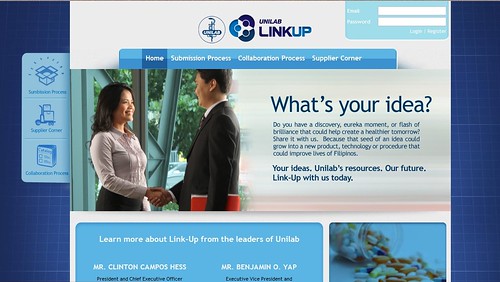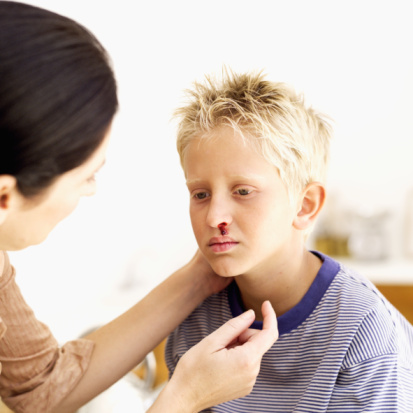Where does the blood in a nosebleed come from?
The blood
usually comes from a blood vessel located in the front of the nasal septum
(nasal partition) or further back in the nasal cavity.
What can cause a nosebleed?
·
Picking the nose.
·
A blow to the nose or damage to the mucous
membrane.
·
A cold or flu.
·
A nasal allergy.
·
Dry mucous membranes in the nose due to a stuffy
indoor atmosphere.
·
Hypertension (high blood
pressure) - rarely.
· Certain kinds of medication; for instance,
products that reduce the viscosity of the blood (such as aspirin (eg Micropyrin)and non-steroidal anti-inflammatory drugs).
·
Exposure to chemicals that may irritate the
mucous membranes.
·
Deviation of the nasal (septum).
Most nosebleeds occur for no obvious reason.
Other rare causes of nosebleeds
·
Blood diseases such as leukaemia or
haemophilia.
·
Tumours in the nasal cavity.
·
Osler's disease.
Danger signals in a severe nosebleed
·
Heavy bleeding.
·
Palpitation, shortness of breath and turning
pale.
·
Swallowing large amounts of blood, which will
cause you to vomit.
How to avoid nosebleeds
·
Avoid damaging the nose and excessive
nose-picking.
·
Seek medical treatment for any disease causing
the nosebleeds.
·
Get a humidifier if you live in a dry climate or
at high altitude.
What to do if you get a nosebleed
·
Sit in an upright position with your head bent
forward.
·
Hold the tip of your nose for five minutes while
breathing through the mouth.
·
If the bleeding stops and then returns, hold
your nose for 8 to 10 minutes. This will allow time for the blood to clot.
·
Applying an ice-pack to your nose may help.
Good advice
·
Do not blow your nose for the next 12 hours
after the bleeding has stopped. This will help the dried blood to remain in
place.
·
Do not swallow the blood. It can cause you to
become nauseous and vomit, or could conceal a greater blood loss.
·
If you frequently suffer from nosebleeds you
should seek help from your doctor.
The most likely development
·
The bleeding usually stops if you follow the
above instructions.
·
Heavy bleeding may require hospital treatment
and, in rare cases, a blood transfusion.
How is heavy bleeding treated and what kind of
medication can be given?
Contact your
doctor if the advice described above does not help stop the bleeding.
Initially,
the doctor will try to stop the bleeding by using something that will make the
blood vessels contract.
When the
bleeding has stopped, the doctor may choose to cauterise the source of the
bleeding with a chemical to prevent it bleeding again.
If the
bleeding fails to stop, it may be necessary to put a pack in the nose.
In rare
cases, an operation may be necessary to tie off the blood vessel that supplies
the bleeding area.
If the
bleeding is caused by another disease, such as increased blood pressure, it is
very important to seek treatment to avoid recurrence of nosebleeds.
Nosebleeds
can be very intermittent, and between bleeds it may be very difficult to
determine their source. If this occurs it is best to ensure that the nose is
inspected during a bleed, which might mean needing to be assessed 'out of
hours' by the on-call GP or local casualty unit.
 Unilab launches Unilab Link-Up, an open source program for innovations in healthcare. It is designed to be an online facility where innovators, suppliers, and consumers can submit their very own innovations whether its on health and wellness products, services, packaging, or manufacturing technology.
Unilab launches Unilab Link-Up, an open source program for innovations in healthcare. It is designed to be an online facility where innovators, suppliers, and consumers can submit their very own innovations whether its on health and wellness products, services, packaging, or manufacturing technology.








